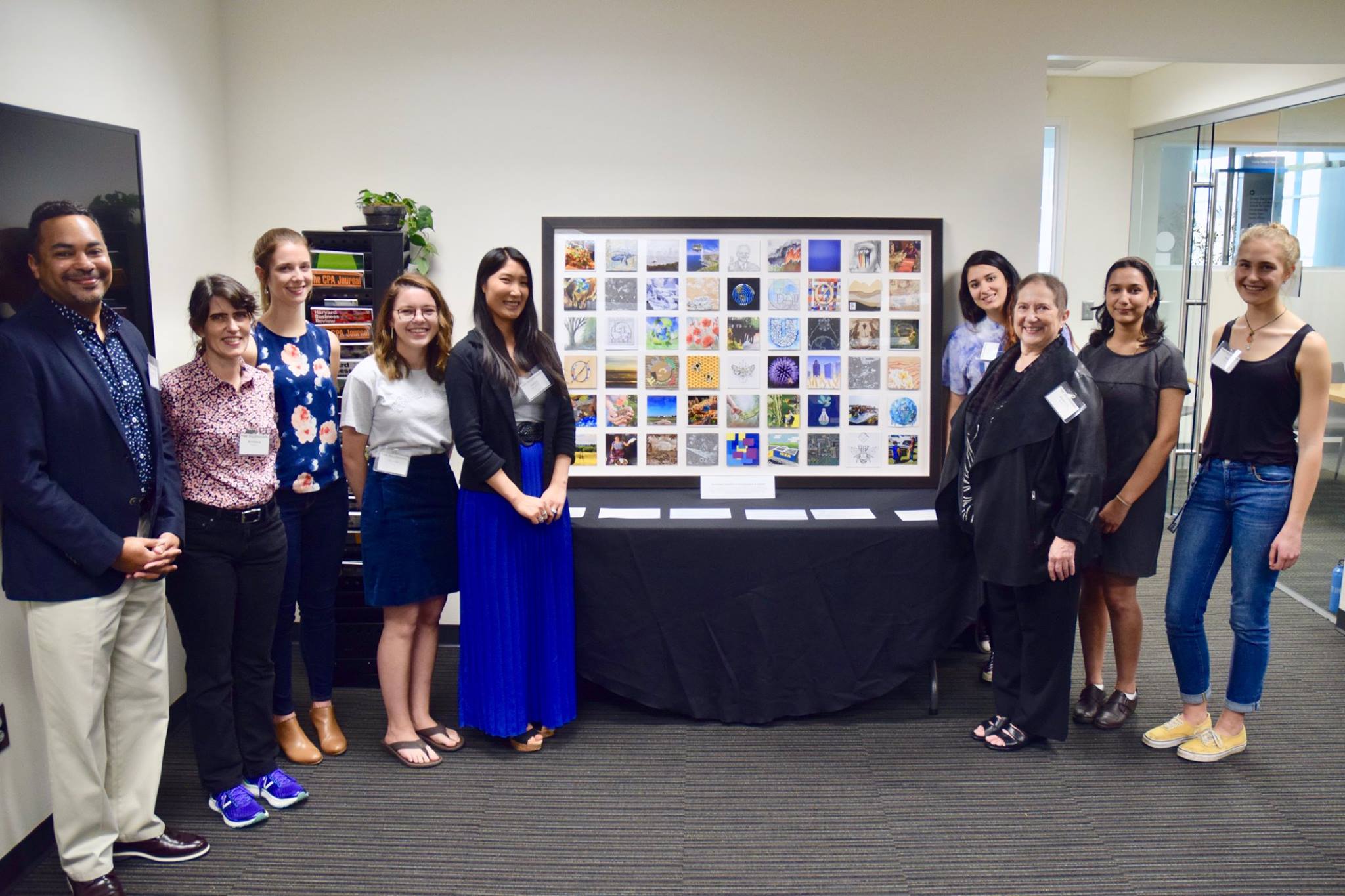In February, the Ray C. Anderson Center for Sustainable Business (“Center”) at the Georgia Tech Scheller College of Business opened its doors for an event unlike any other hosted in the five years since its founding. The Center regularly welcomes CEOs, scholars, and MBA students for events focused on how business can help to build a healthier planet and stronger communities. However, on this particular evening in February, those walking through the door were painters, sculptors, photographers, and mixed media artists attending the art opening of Interpretations of Sustainable Business, a new permanent installation located in the Center.
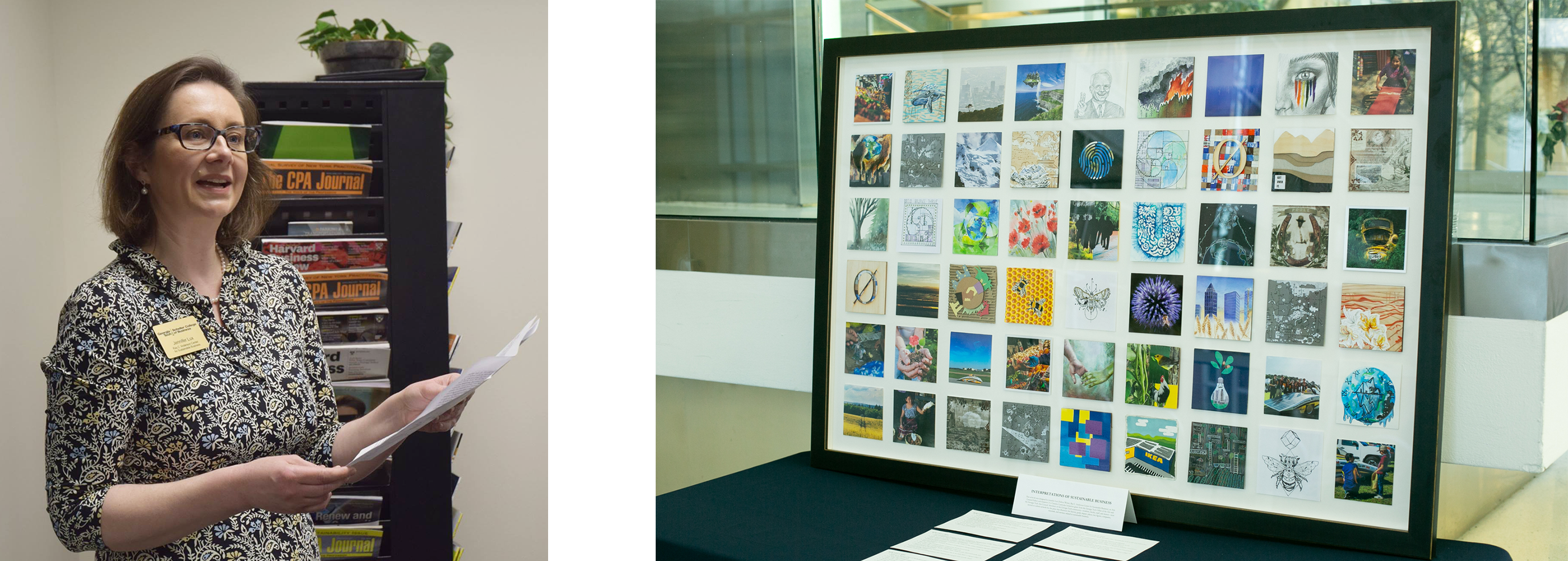
(Left) Jennifer Lux speaks at art event. (Right) 'Interpretations of Sustainable Business' combines art from 23 Georgia Tech faculty, staff, students and alumni.
The collaborative art project—which brought together 23 Georgia Tech faculty, staff, students, and alumni—was the brainchild of Dr. Jennifer Lux, writer and editor for the Center, who received a Creative Curricular Initiatives grant from the Office of the Arts and the Georgia Tech Arts Council.
The call for artwork asked that each piece relate to environmental sustainability (e.g., the circular economy, climate change) or social dimensions of sustainability (e.g., human rights, community engagement, equity). The final framed piece, measuring approximately four feet by five feet, contains 54 small windows that invite viewers to peer into big ideas. Visitors to the Center can see tiny, carefully crafted images of subjects such as: the Georgia Tech Solar Racing team, declining bee populations, offshore wind parks, and smog over Salt Lake City.
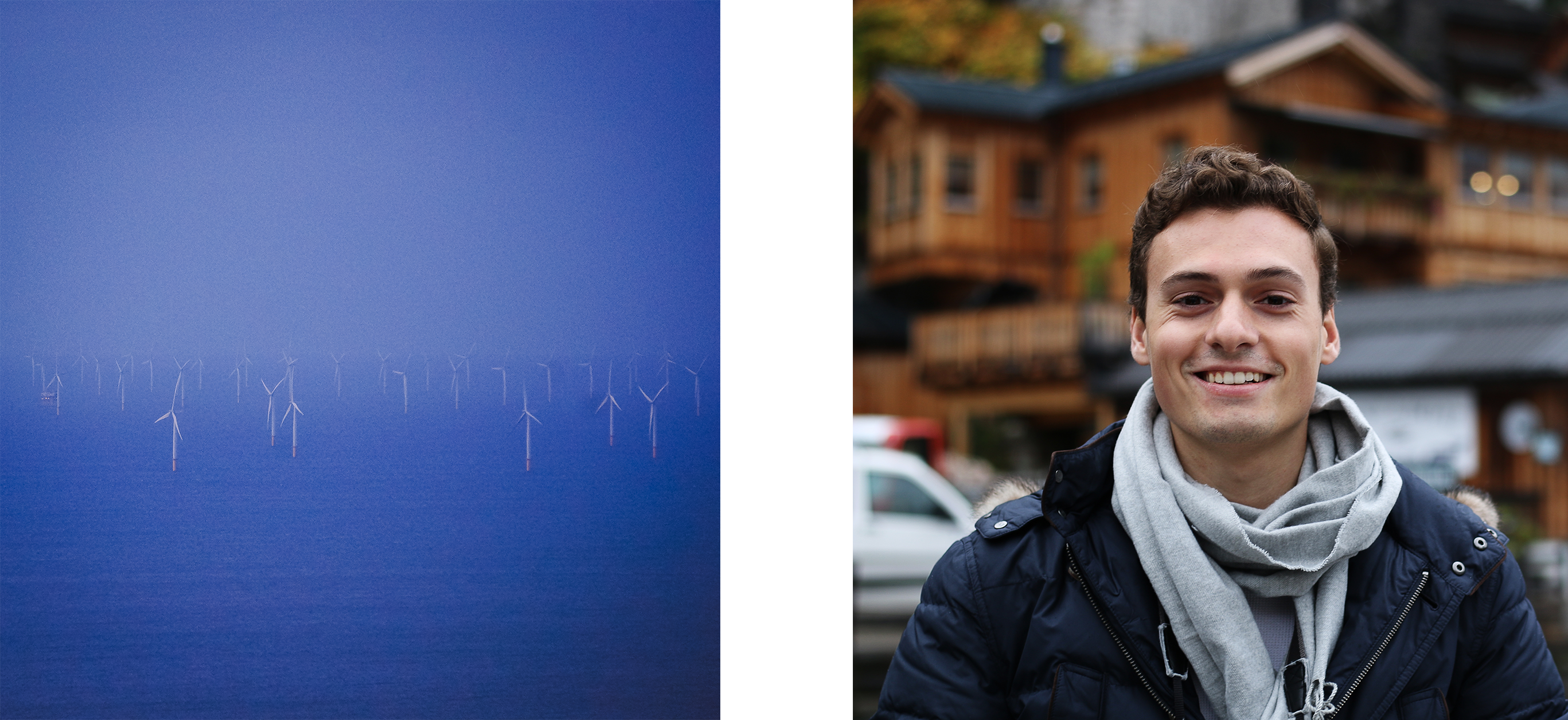
(Left) Photograph of windmills along the water, seen from a coastal hilltop in Northern Europe. (Right) Artist Cole Messina, currently studying Mechanical Engineering at Georgia Tech.
Into the Blue, a photograph by Mechanical Engineering major Cole Messina, captures a moment during his study abroad for the German LBAT program. Messina had hiked up a large hill to see the sunset—and caught sight of windmills far out in the water. He said, “Off the coast of Northern Europe, many offshore wind parks are cropping up, harnessing the power of the North Sea winds. I had the opportunity to visit a wind farm and go inside a windmill. These fascinating feats of engineering can produce electricity to power thousands of homes and have very little impact on the environment.”
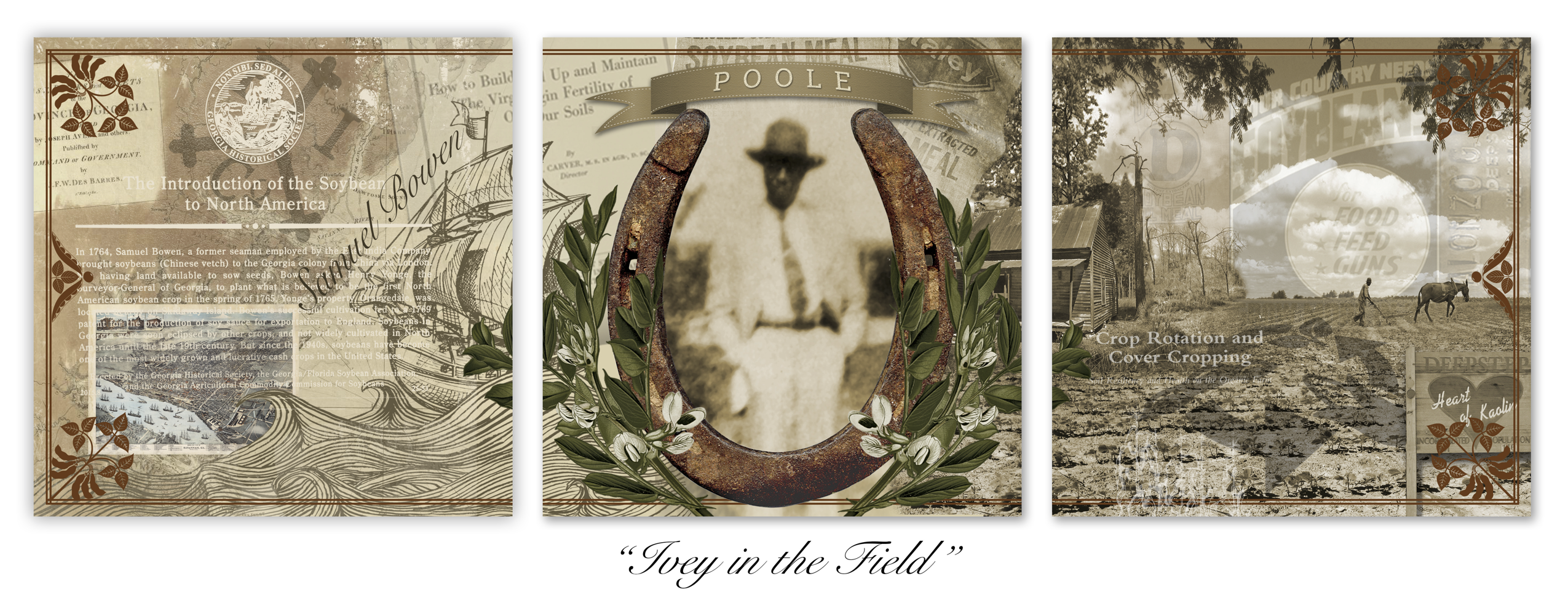
A digital collage of family photos and heirlooms by Library Associate Jerrold Mobley, including a horseshoe from his grandfather’s sharecropping farm.
Ivey in the Field, a digital collage triptych by Jerrold Mobley, Library associate, also connects sustainability with a personal story. His work depicting real-life implications of sustainable agriculture includes family photos and heirlooms, “most of which survived by being locked in a vintage, powder-blue Samsonite suitcase for decades,” he said. One featured artifact is his family’s “lucky horseshoe,” which was passed to him when he bought his first home, to be hung over his front door. He said, “It’s a worn, rusty shoe off a mule that my grandfather used to work land as a sharecropper in Deepstep, Georgia. At some point during his life, he shifted the bulk of his farming from traditional crops to soybeans, appreciating different sustainability features of the plant with regards to soil health and crop rotation benefits.” This farming practice also helped him provide a better life for his family, which included his daughter Pattie, Mobley’s mother, who attended the opening.
Mobley said, “My mother, who didn’t know until moments before the reception that I’d paid tribute to her father with my piece, admitted she was holding back tears when she saw it. Her emotions became a powerful testament to what sustainability is really about: leaving a better world for those who will follow.”
“Each time I look at the artwork, I discover something new,” Lux said. “We at the Center are so grateful for the artists who put such time and thought into their submissions. The final piece tells so many different stories about sustainability.” She continued, “The first word that comes to mind when people think of Georgia Tech is probably not ‘artistic.’ However, when you think about the exceptional work our students and graduates achieve, creative thinking is always at the core.”
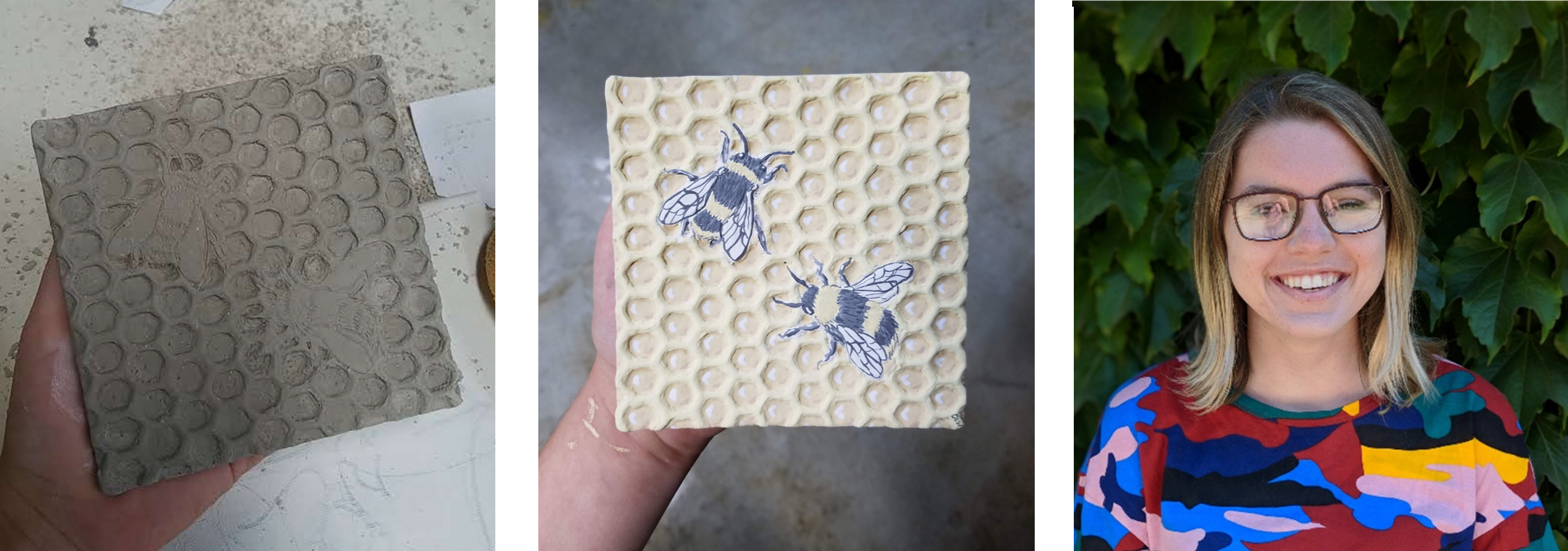
Using reclaimed clay, ‘Busy Bees’ was created by Scheller College of Business student Olivia Webb to express the importance and ingenuity of the honeybee.
Michael Oxman, managing director of the Center, highlighted the power of the arts to transform hearts and minds. “Our namesake, Ray C. Anderson, found inspiration in a poem called Tomorrow’s Child, written by an employee after hearing one of Ray’s talks. The poem encouraged Ray to persist in turning his company into a model of corporate sustainability and responsibility,” he said. Ray continued to use the poem in his talks over many years as a way to motivate others, both within and beyond Interface, to engage in a new vision of corporate sustainability.
Art opening guests and visitors to the Center have responded to the artwork with interest, curiosity, and questions. Beril Toktay, faculty director of the Center, says, “We hope this work will prompt viewers to reflect on the vital importance of sustainable business across a spectrum of environmental and social concerns—and inspire them to keep carrying the sustainability torch high.”
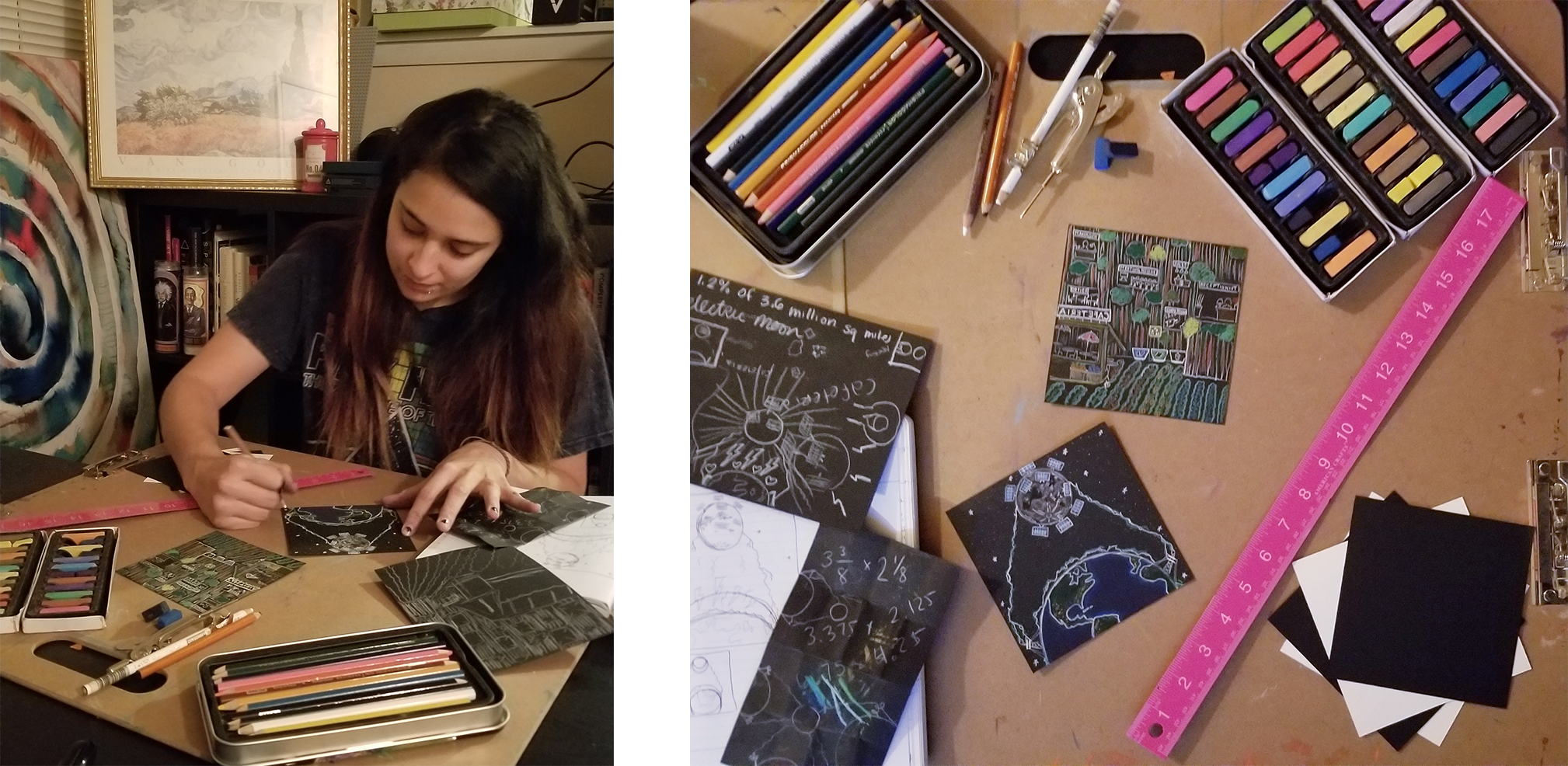 Works in progress by artist and Biology Ph.D. student Maria Granada.
Works in progress by artist and Biology Ph.D. student Maria Granada.
Artists who contributed to Interpretations of Sustainable Business:
Anonymous
Dr. Rebecca E. Burnett; Literature, Media, and Communication (Faculty)
Jennifer Carlile, Institute Communications (Staff)
Tiffany Chau, Mechanical Engineering (Undergraduate)
Cassandra Chu, Biomedical Engineering (Undergraduate)
Matthew Fishel, Instructional Education (Staff)
Chandler Fletcher, Business Administration (Undergraduate)
Maria Granada, Biology (Ph.D. Student)
Grace Halverson; Science, Technology, and Culture (Alumna); Digital Media (Graduate Student)
Ananya Jain, Materials Science and Engineering (Undergraduate)
Cole Messina, Mechanical Engineering (Undergraduate)
Kathy McGinn, Office of Research Integrity Assurance (Staff)
Jerrold Mobley, Library (Staff)
Michael Mutkoski, Computer Science (Undergraduate)
Madolyn Penuel, College of Business (Staff)
Alex Poff, Architecture (Undergraduate)
Dr. Morvarid Rahmani, College of Business (Faculty)
Allyson Stone; Science, Technology, and Culture (Alumna)
Siena Tetali, Neuroscience (Undergraduate)
Olivia Webb, Business Administration (Undergraduate)
Erin Willis, Business Administration (Undergraduate)
Zoe Zenet, Civil Engineering (Undergraduate)
Mary Zhou, Business Administration (Undergraduate)
More about Creative Curriculum Initiatives and Jennifer Lux:
In the past two years, close to 60 arts grants have been awarded by the Office of the Arts and the Georgia Tech Arts Council to faculty, staff, and students from across campus. The sponsored projects are intended to nurture students’ artistic sensibilities and cultivate an environment where the arts thrive and inspire all members of the campus community.
Jennifer Lux is the author of a book of poetry, White Portals (Press 53, 2018), and an illustrator whose artwork has been licensed by the The Art Institute of Chicago’s Museum Shop. She has curated several exhibits of student artwork at the Ferst Center for the Arts and the Woodruff Arts Center, including Poetry On and Off the Page and Student View.
